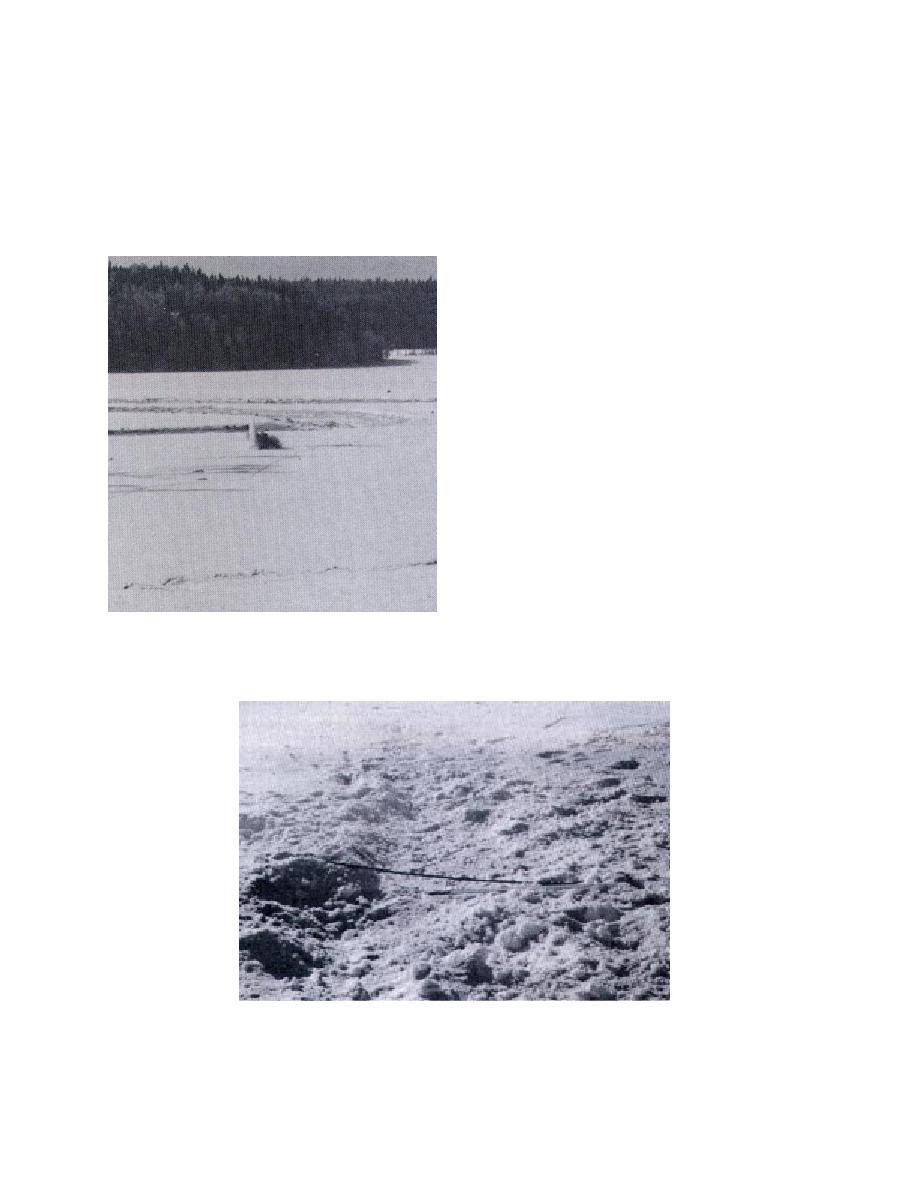
In one crater (no. 2 in Table 3), a 1.2- 0.6-m
surface. The dud projectile produced a small crater
area of the 0.25-m ice sheet was completely lifted
estimated to be less than 1 m in diameter and of
and blown out of the crater, exposing the frozen
unknown depth; we did not measure this crater for
ground underneath. The exposed frozen ground
safety reasons.
was not visibly disturbed or removed by the ex-
Four 105-mm projectiles with delay fuses were
plosion (Fig. 4). There was no cratering of the fro-
fired into the test area; three ricocheted off the ice
zen ground beneath the ice. One of the eight point-
before exploding, and one detonated in the snow
detonating projectiles was a dud, creating only a
and ice cover similar to the point-detonating projec-
white plume of snow and ice when it hit the ice
tiles. Figure 5 shows one ricocheting projectile
exploding near the ice surface. This explosion
produced a shallow elongated crater (no. 8) in
the snow (Fig. 6), approximately 2.4 m wide at the
near end, narrowing down to 0.6 m wide at the far
end and 7.6 m long. Two ricocheting projectiles
exploded in the air. Figure 7 shows the white plume
of snow and ice where the projectile first hit and
the dark explosion cloud high in the air (50 m?),
near the skyline. The ricocheting projectile pro-
duced a small crater (no. 7), 1.07 0.60 m. The one
delay-fused projectile that appeared to detonate
normally produced a crater (no. 10) similar to those
of the point-detonating fused projectiles, mea-
suring 3.0 2.4 0.35 m.
All of these test firings of point-detonating and
delay-fused 105-mm projectiles were done at a low
angle of fire (19.719.9). This is the standard pro-
cedure for firing into the impact range for train-
ing, with the projectiles reaching the target in the
shortest time. A target can also be engaged from
the same firing point with a high angle of fire, pro-
ducing a high parabolic flight path, a longer flight
Figure 5. Ricocheting projectile exploding near the ice
time and a more vertical impact angle. Delay-fused
surface. The white plume of snow and ice shows where the
105-mm projectiles fired at a high angle would not
projectile initially hit, and the explosion was just beyond it.
Figure 6. Shallow elongated crater produced by a ricocheting delay-fused
projectile.
7



 Previous Page
Previous Page
